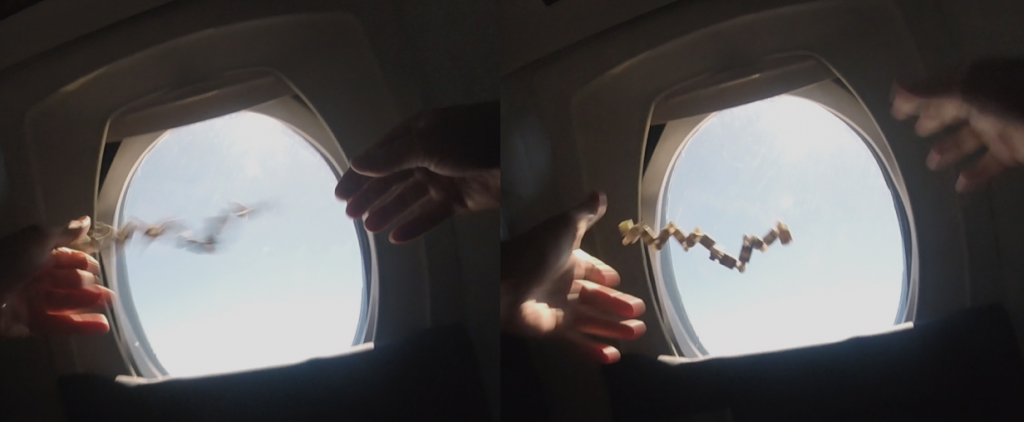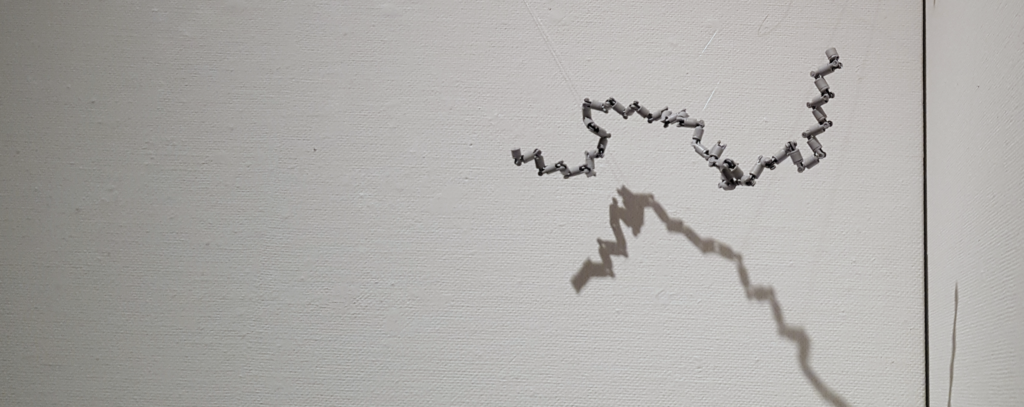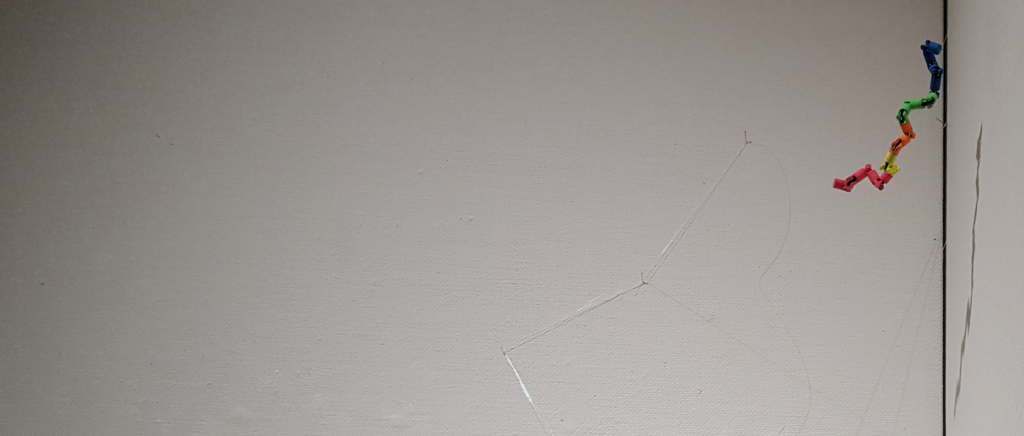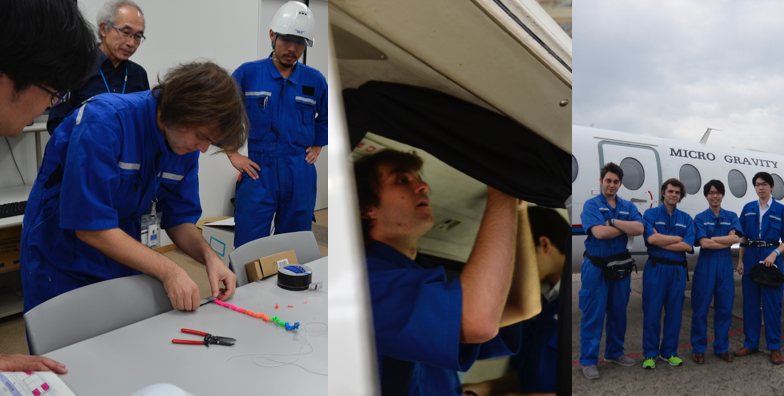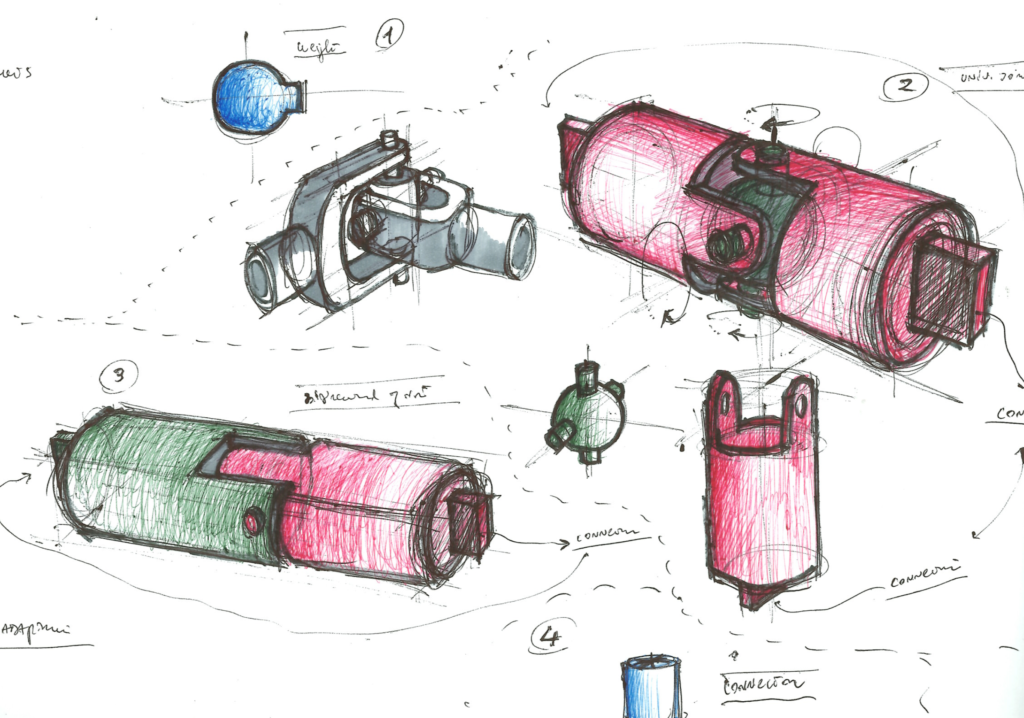A sculpture for zero-gravity environments inspired by the phenomena of protein folding.
(turn on 1080p)
Physical Proteins
Tsukuba Museum of Art, Ibaraki, Japan (July 2018)
Concept
Proteins are chains of amino acids linked together. They represent one of the most important building blocks of life. The different properties of each amino acid cause a protein to fold into a well defined three-dimensional configuration, which is determined by their sequence. The process that makes the protein folding is the point where life makes a transition from a one-dimensional DNA sequence into a three-dimensional body. One method that scientists use for studying proteins is through physical models. However such models are static. I was interested in investigating possible relations between the genetic code, it’s literal meaning, the resulting shape, and its expression outside of our body.
For this, I have designed a novel protein. The DNA of this protein is a translation of Japanese haiku poetry. The Zero-Gravity Protein is a physical representation of a novel protein designed for being experienced and liberated in an outer space environment. It is designed as a semi kinetic sculpture that tries to give to astronauts the idea of how protein foldings can be experienced. Proteins develop themselves in aqueous solutions.
The Zero-Gravity Protein floats in the outer space. I have performed two tests on the parabolic flight. The first two shows a symbolic launch of the physical model of the protein into the Outer Space. The body of the tester and the model became related by floating in the same space and trying to adjust themselves. A third test, conducted with black light, is an homage to Lucio Fontana and his installation “Ambiente Spaziale”.
Space Art Project: Experiments in micro-gravity environments
Direction by Prof. Osaka Takuro (University of Tsukuba).
In collaboration with Diamond Air Service Japan and JAXA – Japan Aerospace Exploration Agency.
I have curated a small exhibition for the Ars Electronica Festival 2017, and the Tsukuba Media Art Festival 2018.
Project report (in Japanese): http://www.emp.tsukuba.ac.jp/wp/archives/2702
In order to design the sculpture, I have decided to create my own protein. Through a process that will be explained later, I have encoded a Japanese haiku, composed by the famous poet Basho Matuso into a sequence of amino acids. Then, through a protein prediction software, I was able to obtain the possible structure of the protein. Through this project, I aim to explore the protein design as a novel field of creative exploration. I have tested the process by using the other two haiku and a famous Italian poetry.
Protein design
Three haiku 1-2-3 by Basho Matuso and Ho sceso le scale of Eugenio Montale
Prototypes
Some of the early prototypes I made, from paper structures to software simulations.
*NOTE: in order to visualize the different structures your browser must support WebGL
Build with UCSF Chimera
Build with UCSF Chimera
Build with UCSF Chimera
Build with UCSF Chimera
Build with UCSF Chimera
Build with UCSF Chimera
Build with UCSF Chimera
Build with UCSF Chimera
Build with UCSF Chimera
“Ho sceso le scale…” by Eugenio Montale
Build with UCSF Chimera
Build with UCSF Chimera
Build with UCSF Chimera
Self assembly system
Folding sculpture
Sketches – Joints
